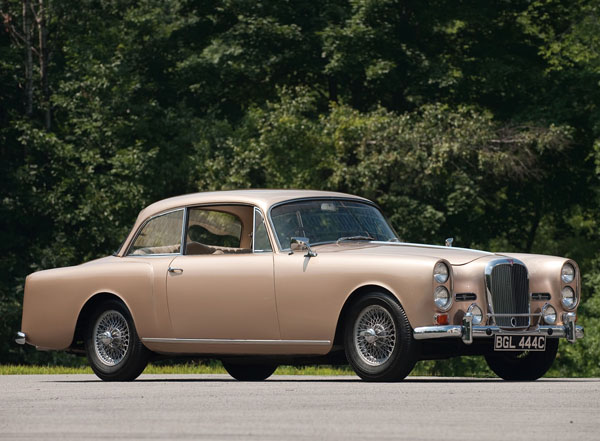
At the outbreak of war in September 1939 Alvis was producing four different models but during an air raid on Coventry in 1940 the car factory was severely damaged with much of the essential equipment destroyed beyond repair causing car production to be suspended for the duration of the war.
When car production resumed the first car to go into production was a four-cylinder model, the TA14 whose engine was based on the pre-war 12/70. Whilst this was a reliable and attractive car it reflected the typical austerity forced on industries in post-war Britain. Not only had Alvis lost their car factory but most of the coach builders had been acquired by other car manufacturers. The post-war history of Alvis was mainly coloured by its quest to find reliable and reasonably priced bodywork.
In 1950 a new chassis and six-cylinder engine became the basis of all Alvis models until production ceased in 1967. This new model was designated the TA21 and had a saloon body from Mulliners of Birmingham whilst Tickford produced their drophead models. In 1954 Mulliners was acquired by Standard-Triumph and Tickford became part of the Aston-Martin-Lagonda group.
To enable Alvis to continue production they concluded an arrangement with Herman Graber of Switzerland. With a licence in place, from 1955 all Alvis bodies became based on Graber designs but some of these came at such a high price that very few were made. In 1958 Park Ward, coachbuilders for Rolls-Royce were contracted to build bodies at a much lower price. These cars, the TD21 and variants, the TE21 and TF21 were well built and fast cars. However it was clear by the mid sixties that with a price tag nearly double that of the mass produced Jaguar the end could not be far off.
Rover took a controlling interest in Alvis in 1965 but the new model expected from the change of ownership never eventuated as Rover was soon acquired by British Leyland. With political troubles aplenty in the UK car industry at that time, production finally ceased in 1967.








